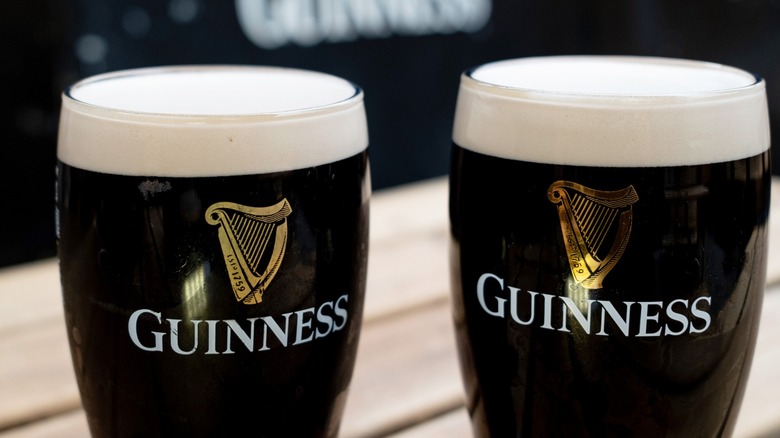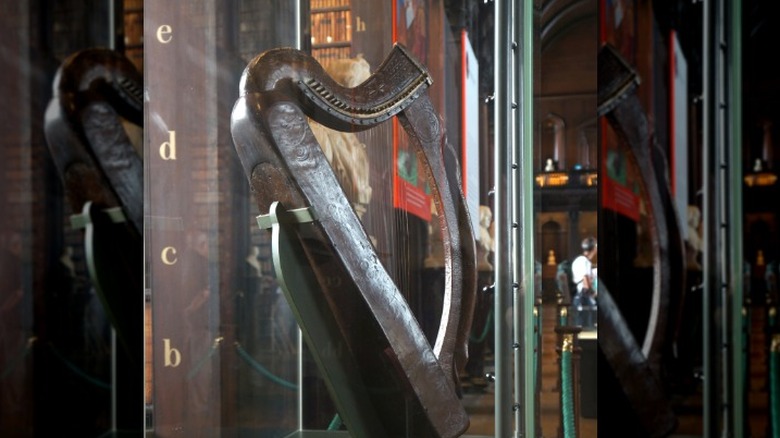The Emblem On Your Glass Of Guinness Means More Than You Probably Thought
Whether you're having a pint on vacation in Ireland, where it's the best-selling drink, or knocking back a longneck here at home in the States, there's nothing quite like a Guinness. (For the record, there is no difference between Irish and American Guinness — it all comes from the same place.) Every part of it is iconic: the deep, dark color, the robust foamy head, and of course, that great golden harp that adorns its labels and pint glasses. Why a harp? Well, that's no mystery: it's a well-known heraldic symbol of Ireland that Guinness adopted for its own purposes.
As Guinness was growing in the latter half of the 19th century, its makers saw the importance of a recognizable brand — and more specifically, a recognizably Irish brand. So when Guinness started to sell bottles of its famous stout in 1862, they put a golden harp on the label. It's far from the harp's only use as a symbol. In addition to long being a part of Ireland's coat of arms, Ryanair, the Irish low-budget airline, also uses a harp, as does the Government of Ireland — although when that was established in 1922, they had to avoid using the same design as Guinness' trademark. (The "straight edge" of the Guinness harp is on the left; the Irish government's harp is the reverse.)
The Guinness harp is modeled after the Trinity College Harp
The Guinness harp — in fact, just about every Irish heraldic harp, up to and including the one on the coat of arms — is modeled after the Trinity College Harp, one of the oldest surviving medieval Gaelic harps. It is often called "Brian Boru's Harp," as it was once said to have been used by the legendary High King of Ireland. In actual fact, it was most likely made in the 14th century, some 300 years after Brian Boru's death. The harp is now on regular display in Trinity College's Long Room.
Interestingly, however, the harp you see at Trinity College looks rather different from the one on the Guinness label. That's because the Guinness label (and the other assorted heraldry) was based on an older restoration of the harp, which made it look quite a bit thinner than it was actually supposed to be. In 1961, it was redone under the supervision of the musicologist Joan Rimmer, who restored it to its typical wide state. Even if you can't make it to Trinity College anytime soon, though, you can visit a nearby Guinness brewery and check out the emblem up close and personal as you practice your perfect pour.

